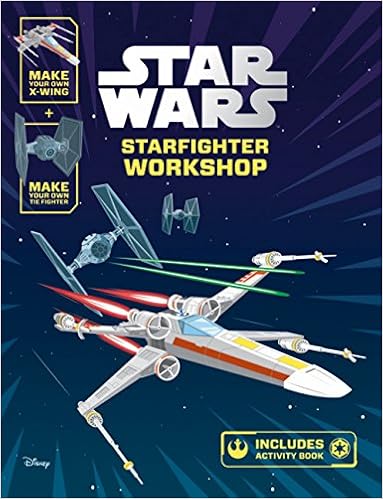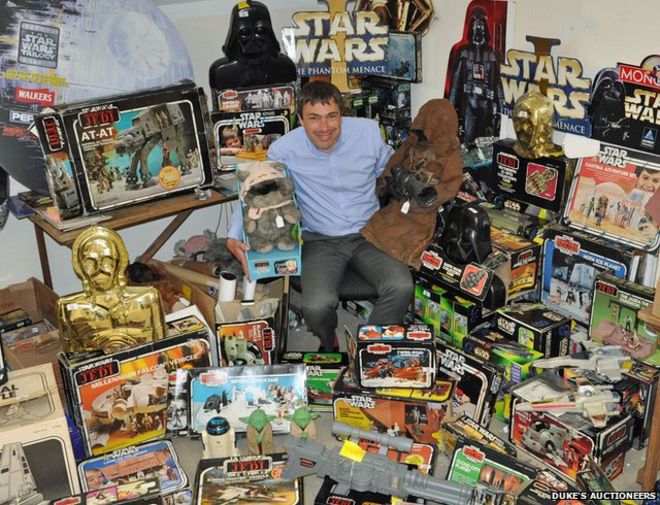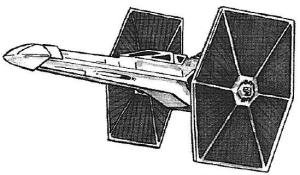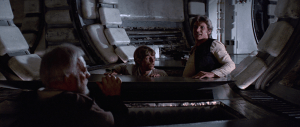Review: Star Wars: Starfighter Workshop (or, The Child Within Is Happy. The Child Without, Not So Much)
Today’s review is of Star Wars Starfighter Workshop by Egmont Publishing. For those regular readers, on here, or on twitter, you will know that Niece and Nephew have disavowed any and all interest in Star Wars. As such, it falls to me to play with these cut-out X-Wing and TIE Fighter models. It will be difficult, but I’ll be sure to try my best.

For that, much like its counterpart, R2-D2’s Droid Workshop, is what this book is about. It gives you the pieces to build little foam models to play with (or just admire from afar). But unlike the Droid Workshop, this comes with not just one model, but both the aforementioned X-Wing and TIE Fighter. I know. Oh I know. I made vroomy noises just while making them.

Following the same layout of Droid Workshop, Starfighter Workshop is comprised of two parts. The latter and – in terms of size – more meatier part of the book is the model parts storage. The former is a small booklet filled with various games and puzzles to wile away your time. I’ll examine that first.
The booklet presents the various puzzles in story format, loosely following the events of A New Hope. Indeed, it even gives each puzzle a theme of a certain scene from the film. It’s an interesting concept, and I appreciate the effort. Too easily they could simply have presented the games without fanfare – which I suppose is okay, but the attempt at a theme is, as I say, appreciated. The games themselves are fairly standard ones: Mazes, spot the difference, picture sudoku, draw your own Something-or-Other and the like, and they’re a fun and not especially difficult ways to pass your afternoon, or a five minute break. Although, I should point out that a couple of the puzzles were very simple – and not in the fun way. One is literally this picture (drawn) –
– with a couple of stormtrooper helmets covering their heads, and we then have to decipher who each person is. Another complaint – though more of an observation – is that I’m not really sure why the puzzle book is really there. I don’t mean in any existential way. It just seems a rather odd addendum. The book could easily just be the models on their own. Having said that, I did ask a friend, who thought that perhaps it provides more bang for your buck (pop for your pound?) or an attempt to justify the (£20 RRP) price. I’m not sure I agree with this, and it’s certainly not the only solid reason out there, but it’s the best theory I’ve heard put forward. Definitely better than my theory, which was to shrug dramatically and give a barely comprehensible ‘Idunno’. At any rate, I know next to nothing about the development of books such as these, so I really can’t provide much comment. (I should also add that I’m not a toy collector, so I have no real understanding if that’s a fair price or not. Ultimately, it’s up to you.)
Besides, while the puzzles – sorry to repeat myself – were generally good, they’re not the main draw of the book. This is:

Or rather, the fact that you get to play with starfighter models! Now, sure, some may say that you can play with the toys you no doubt already have, and that you don’t really another X-Wing model. But really, can you ever have too many Star Wars toys?

Well, it’s entirely up to you to get this or not. It’s not my job to tell you to buy something (or not). All I do is provide my thoughts and experiences.
And so, here are my thoughts: as someone who used to play with my toy X-Wing in the bath, recreating Luke’s crash landing on Dagobah, I was entirely enamored with the book from the start. Although the start was technically simply staring at the book in barely concealed glee. The actual start was constructing the thing. Now, cards on the table: I don’t like making things. I like a thing having been made, and made by me. But I don’t like the making itself. I can do IKEA furniture. I can do the really sharp Metal Earth models. I can do 19th century wooden ships, with the incredibly fiddly rigging that I somehow thought was a good idea beforehand but just wanted to shoot out of a real-life cannon during. But I hate hate hate making things. So I was entirely, happily relieved that these two weren’t all that difficult. There’s not much to each model – the X-Wing is 26 pieces, the TIE 20, and the directions are detailed in more or less 10 very easy steps. Indeed, whenever there was a difficult bit, the instructions themselves would warn you beforehand that some bits are tricky, and not to be afraid to force the issue. These tips, I found, were quite useful, as even though the material – a sort of laminated card and foam blend – seemed fairly sturdy, I was often worried about breaking or otherwise irreparably damaging the model, and so I welcomed the advice. (Hey, we amateur modelers take our reassurances wherever we can.) The sturdiness of the pieces, and the frame, definitely helped when you ‘accidentally’ put in a piece incorrectly, and needed to remove it.

And for playing, well, maybe don’t try to recreate the Dagobah landing scene in your bathtub with it, but it can survive some fairly rough handling without needing to worry about breaking – though after some heavy knocks the X-Wing’s laser cannons would bend and crease, to such a degree that I couldn’t entirely erase evidence of the damage. Still, even with that in mind, there’s still more that you feel safe in doing with these types of models than more solid ones. Flying, being one. Okay, so it may be more ‘falling in style’ – or not, depending on how good you are at throwing (I suck, but they flew well enough) – but it’s definitely quite fun to throw them at your friends (don’t aim for the face. Seriously.) or they throw it at you.
Beyond that, it’s the sheer presence of the things that I like the most. The book states that the X-Wing’s dimensions are 8cm(H)x31cm(L) and the TIE’s dimensions are 22.5cm(H)x21cm(L), which I perceive to be generally true), so they’re not particularly large, nor overly small. But there’s just something about them that make them feel larger than they are. It’s definitely not the weight, for they’re rather floaty. But when you hold a TIE Fighter with a wing larger than your hand, you can’t help but feel slightly elated, like the kid within is finally experiencing a dogfight (while the actual small humans had to make do with Frozen. Sorry, kids). Flying them around, having mock space battles are just so much fun that I, on occasion, simply watched and admired them. Right up until it hit me in the face.
This all sounds weird, doesn’t it? I honestly can’t explain it better, but this was my experience, and, for lack of a better word, incoherent thought.
Star Wars: Starfighter Workshop by Egmont Publishing is out now in UK bookstores. Thank you to Egmont for providing a copy for review purposes.
Author: Michael Dare
Michael Dare is a writer, lives in the UK, and has been slowly coming to terms with the realization that he is not Sherlock, but Watson. He loves Star Wars, dislikes blue milk. Enjoys jumping sharks. Survives on the tears of sexist men, and cheeseburgers.

